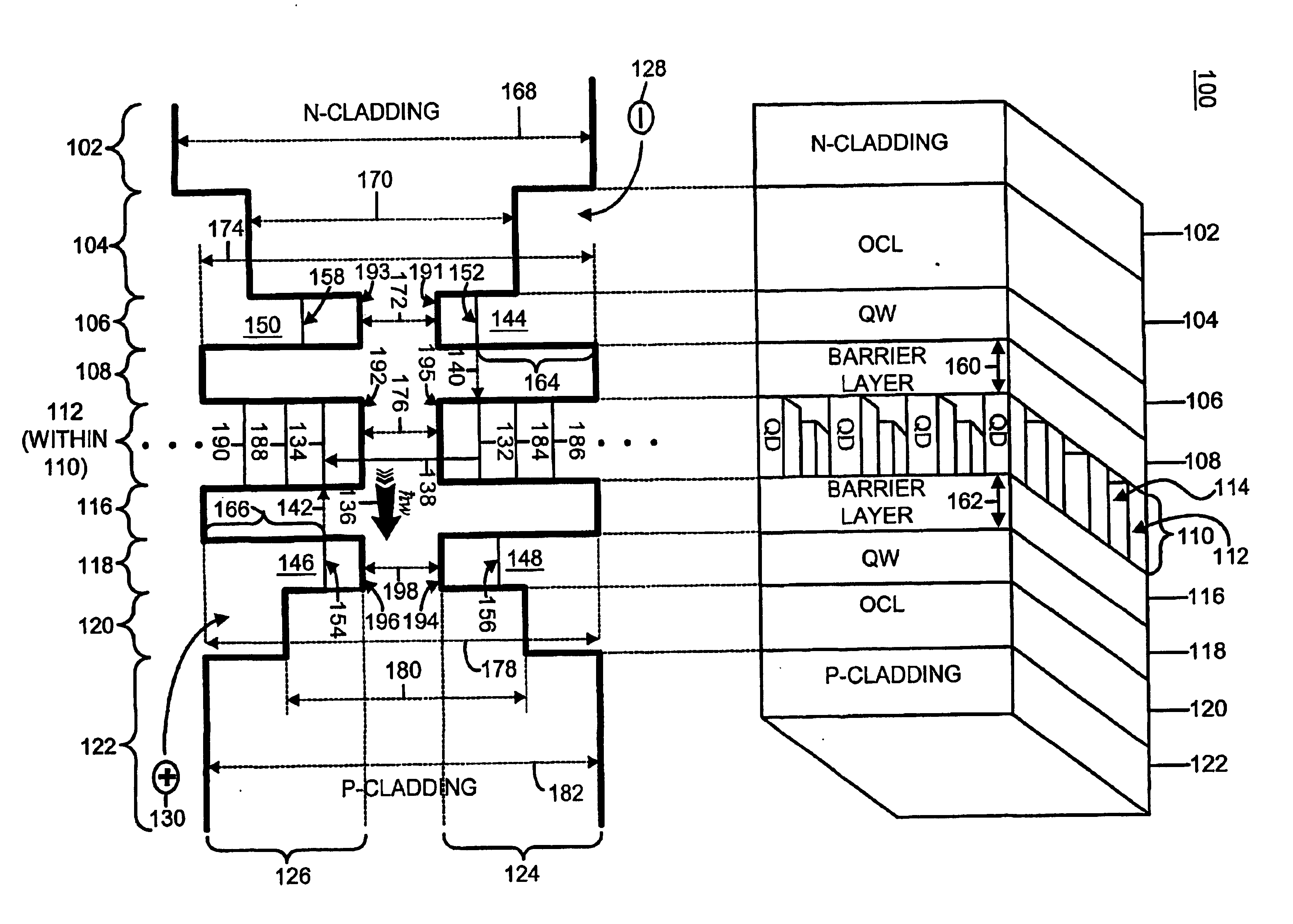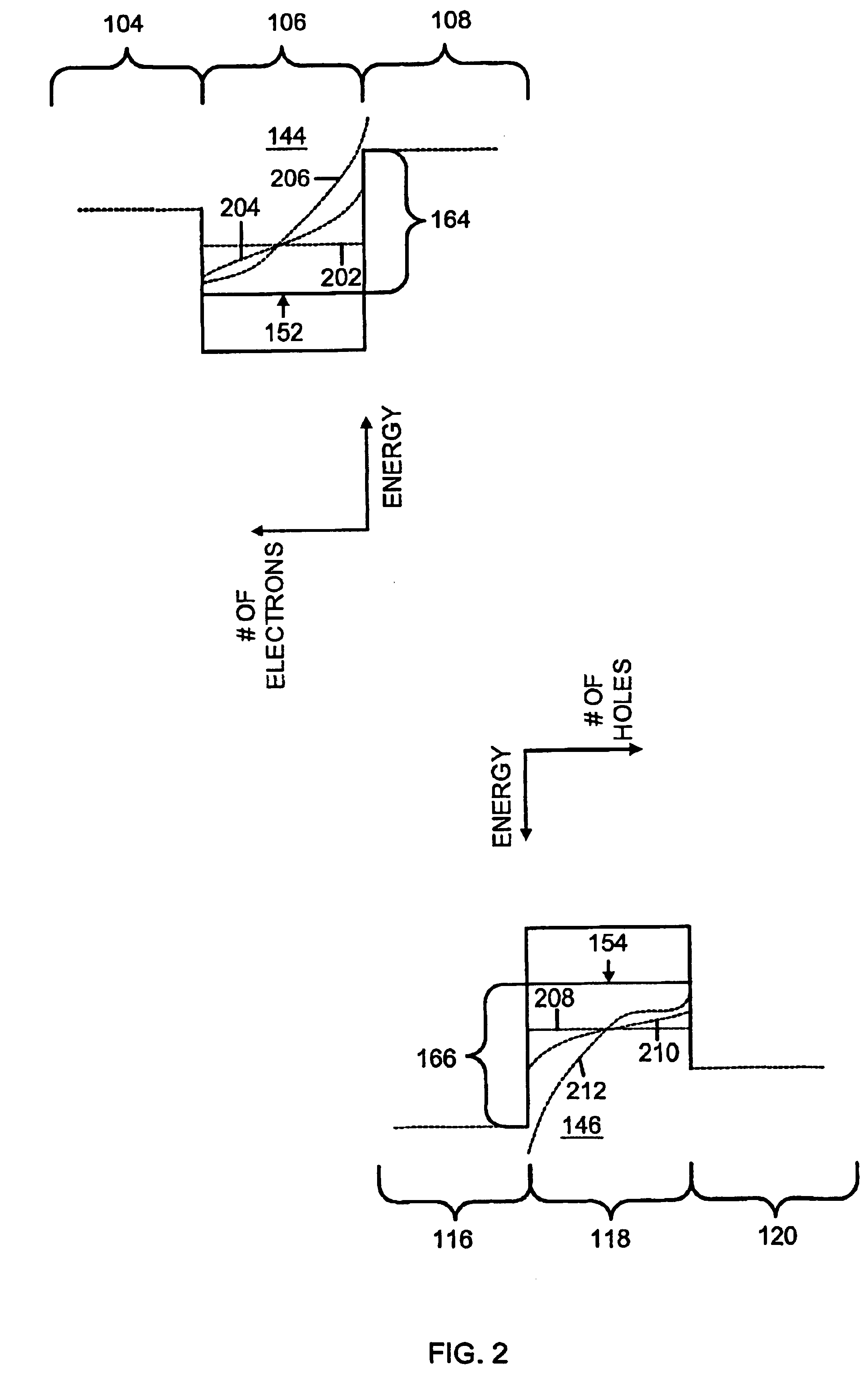Semiconductor laser with reduced temperature sensitivity
a technology of semiconductors and lasers, applied in semiconductor lasers, lasers, solid-state devices, etc., can solve the problems of reducing the temperature sensitivity of conventional qd lasers, requiring complicated and costly measures, and affecting the efficiency of lasers. , to achieve the effect of reducing the temperature dependence of threshold curren
- Summary
- Abstract
- Description
- Claims
- Application Information
AI Technical Summary
Benefits of technology
Problems solved by technology
Method used
Image
Examples
Embodiment Construction
FIG. 1 illustrates an exemplary QD laser structure 100 in accordance with the present invention. The structure 100 includes a QD layer 110 between a first barrier layer 108 and a second barrier layer 116. The QD layer includes one or more QDs 112 separated by a separation material 114 having a bandgap 310 (see FIGS. 3A and 3B, discussed below) which is higher than the bandgap 176 of the QDs. The structure 100 also includes n-side and p-side QW layers 106 and 118 which are separated from the QD layer 110 by the first and second barrier layers 108 and 116, respectively. The thickness 160 of the first barrier layer 108 is sufficiently small to enable electrons 128 to tunnel from the n-side QW layer 106 to the QD layer 110. Similarly, the thickness 162 of the second barrier layer 116 is sufficiently small to enable holes 130 to tunnel from the p-side QW layer 118 to the QD layer 110. The structure 100 also includes n-side and p-side OCLs 104 and 120, and n-side and p-side cladding layer...
PUM
 Login to View More
Login to View More Abstract
Description
Claims
Application Information
 Login to View More
Login to View More - R&D
- Intellectual Property
- Life Sciences
- Materials
- Tech Scout
- Unparalleled Data Quality
- Higher Quality Content
- 60% Fewer Hallucinations
Browse by: Latest US Patents, China's latest patents, Technical Efficacy Thesaurus, Application Domain, Technology Topic, Popular Technical Reports.
© 2025 PatSnap. All rights reserved.Legal|Privacy policy|Modern Slavery Act Transparency Statement|Sitemap|About US| Contact US: help@patsnap.com



